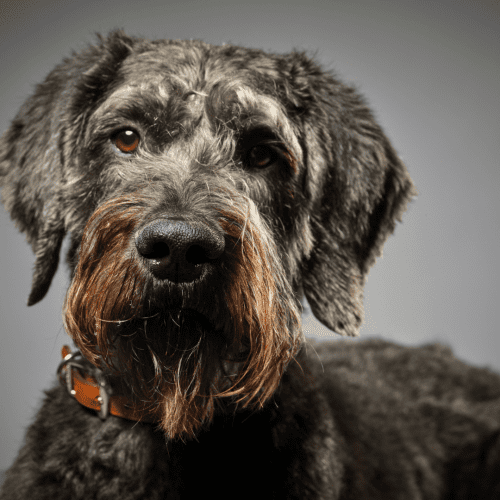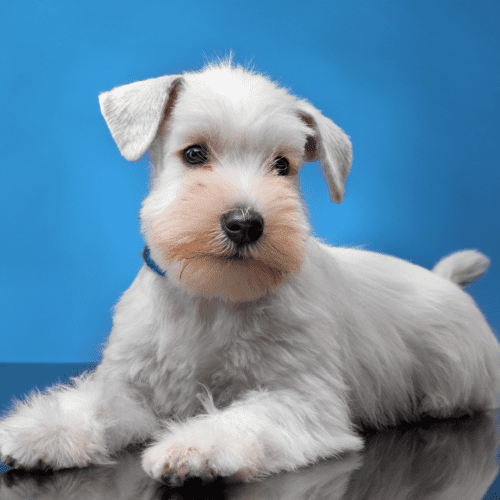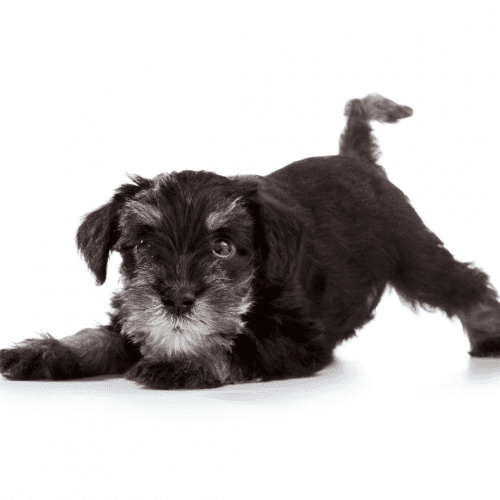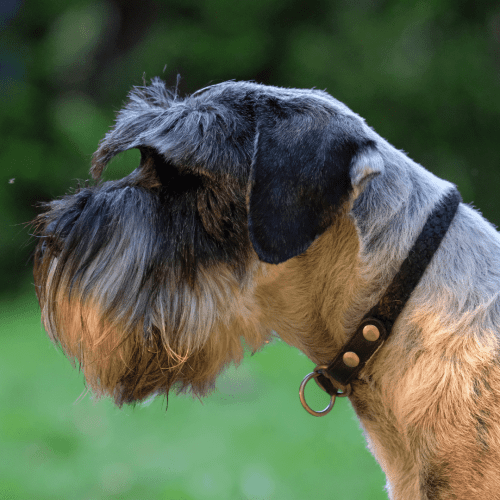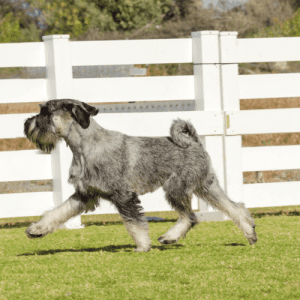There’s something special about the schnauzer dog breed. Schnauzers have big personalities, and they’re known for being loyal and protective of their families. If you’re thinking of adding a schnauzer dog breed to your family, here are some things you need to know. Schnauzers come in three different sizes: standard breed, miniature dog breed, and giant dog breed. Schnauzers are considered intelligent dogs and are easy to train.
Did you know that Schnauzers are among the most popular dog breeds in the United States, ranking 17th out of 197 breeds recognized by the American Kennel Club? With their distinctive beards and eyebrows, Schnauzers are easily recognizable and beloved by many. But what sets them apart from other breeds? Where do they come from, and what are they used for? Who are the people that connect with these dogs? In this discussion, we will explore all these questions, uncovering fascinating facts about Schnauzers that will leave you eager to learn more about these remarkable dogs.
The Schnauzers dog breed is a group of three distinct breeds known for their distinctive appearance and lively personalities. These breeds are the Miniature Schnauzer, the Standard Schnauzer, and the Giant Schnauzer. Each breed has its own unique characteristics and qualities that make them popular among dog lovers. Schnauzers are versatile dogs that can excel in various roles. They’re often seen as therapy dogs due to their friendly and affectionate nature. Their calm and gentle demeanor makes them perfect companions for those needing emotional support. In addition to being therapy dogs, Schnauzers are popular as family pets. They’re known for being good with children and are often described as loyal and protective. Their intelligence and trainability make them easy to handle and integrate into a family environment. Schnauzers have a long history in dog shows. Their distinctive appearance and bushy eyebrows and facial hair make them stand out in the show ring. They’re often successful in various categories such as obedience, agility, and conformation. Furthermore, Schnauzers have a history of being used in working roles. The Standard and Giant Schnauzers, in particular, have been utilized as guard and herding dogs. Their alert and protective nature, intelligence, and strength make them well-suited for these tasks.
Schnauzers dogs stand out from other dog breeds due to their distinctive facial features and versatile abilities. Regarding appearance and physical characteristics, Schnauzers have a square-shaped build, with a sturdy body and a thick, wiry double coat in three varieties: Miniature, Standard, and Giant. Their most recognizable feature is their unique facial hair, which forms a beard and bushy eyebrows. Regarding temperament and personality traits, Schnauzers are known for their intelligence, alertness, and loyalty. They’re generally friendly and affectionate towards their families, but can also be wary of strangers, making them excellent watchdogs. Schnauzers are known for being energetic and require regular exercise to keep them physically and mentally stimulated. They excel in obedience, agility, and even therapy work. Regarding health issues and common ailments, Schnauzers are generally healthy dogs. However, they’re prone to certain conditions such as hip dysplasia, eye problems, and certain types of cancer. Regular veterinary check-ups and a balanced diet are essential for their well-being. Regarding grooming and maintenance needs, Schnauzers require regular brushing to prevent matting and maintain their distinctive coat. They also need regular eyebrows, beard, and leg hair trimming. Additionally, their ears should be checked and cleaned regularly to prevent infections.
Part of the Schnauzers Dog group includes the Miniature, Standard, and Giant varieties. Each variety has its distinct characteristics and qualities. Miniature Schnauzers are small, friendly, and adaptable dogs that make excellent companions. Standard Schnauzers are medium-sized, intelligent, and versatile dogs that excel in various activities, such as obedience and agility. On the other hand, Giant Schnauzers are large, powerful, and protective dogs known for their loyalty and fearlessness. When it comes to health issues, Schnauzers are generally healthy dogs. However, they’re prone to certain conditions, such as bladder stones, pancreatitis, and eye problems. Regular veterinary check-ups and a balanced diet can help prevent these health issues. Training a Schnauzer requires consistency, patience, and positive reinforcement. They’re intelligent dogs that respond well to reward-based training methods. Socialization from an early age is also crucial to help them become well-rounded and well-behaved dogs. Grooming requirements for Schnauzers vary depending on the variety. Miniature Schnauzers have a wiry coat that needs regular brushing and occasional trimming. Standard Schnauzers have a dense, wiry coat that requires regular brushing and hand-stripping to maintain its texture. Giant Schnauzers have a harsh, weather-resistant double coat that needs regular brushing and occasional hand-stripping. Schnauzers are active dogs that enjoy interactive toys that challenge their minds and keep them physically stimulated. Puzzle toys, treat-dispensing toys, and interactive tug toys are all great options to keep them entertained. Schnauzers are naturally associated with people and are often used as therapy dogs. They’re known for their calm temperament, intelligence, and ability to provide comfort and emotional support to needy individuals. Their friendly and gentle nature makes them excellent therapy dogs in various settings, such as hospitals, nursing homes, and schools.
Originating in Germany, Schnauzers are a popular breed of dogs known for their distinct appearance and versatile qualities. The Schnauzers’ origin can be traced back to the 15th and 16th centuries when they were first developed as working dogs in the southern regions of Germany. The exact origin of the breed is still debated among experts. Still, it’s widely believed that Schnauzers were created by crossing several breeds, including the Standard Poodle, Affenpinscher, and the gray Wolfspitz. Originally, Schnauzers were bred for various purposes, such as guarding livestock, catching vermin, and serving as reliable companions. Their keen intelligence, alertness, and loyalty made them well-suited for these tasks. Over time, they became popular for their working abilities and distinct appearance, characterized by their bushy eyebrows, wiry coat, and distinctive beard. Schnauzers have a unique temperament that sets them apart from other breeds. They’re known for being friendly, intelligent, and highly trainable. They’re also known to protect their families and can be reserved around strangers. However, proper socialization and training can help them become well-rounded and well-behaved pets. Schnauzers are popular pets worldwide due to their charming personality, adaptability to various living conditions, and low shedding coat. Their versatility allows them to excel in various dog sports, such as obedience, agility, and tracking. Whether as a family companion, working dog, or show dog, Schnauzers have won the hearts of many dog enthusiasts and continue to be a beloved breed.
Throughout history, Schnauzers dogs have been utilized by humans in a variety of practical and beneficial ways. Their intelligence, loyalty, and versatility make them well-suited for various tasks and activities. One popular role for Schnauzers is as working dogs. They excel in herding livestock, guarding property, and pulling carts. Their instincts and quick thinking make them reliable and efficient workers. Another area where Schnauzers dogs have significantly impacted is in the field of therapy. These dogs have a calm and friendly demeanor, making them ideal companions for those needing emotional support. Schnauzers provide comfort and companionship to people in hospitals, nursing homes, and other therapeutic environments. Schnauzers also play a vital role in search and rescue operations. Their keen sense of smell and agility enable them to locate missing persons in various terrains and conditions. Whether finding lost hikers in the mountains or locating survivors in disaster areas, Schnauzers are invaluable. Furthermore, Schnauzers have found their place in police work. Their intelligence, trainability, and alertness make them excellent police dogs. They assist law enforcement agencies in tracking suspects, detecting drugs, and apprehending criminals. Lastly, Schnauzers thrive in agility competitions. Their athleticism and enthusiasm make them natural competitors in this fast-paced sport. They navigate obstacle courses quickly and precisely, showcasing their agility and coordination.
People from various backgrounds and lifestyles find a deep connection with Schnauzers dogs. The characteristics of Schnauzers make them appealing to a wide range of individuals. They’re known for their intelligence, loyalty, and affectionate nature, which makes them excellent family pets. Schnauzers are often described as good with children and other pets, making them an ideal choice for families. Types of people who connect well with Schnauzers include active individuals who enjoy outdoor activities such as hiking or jogging. Schnauzers are energetic dogs that require regular exercise to keep them happy and healthy. They also thrive in homes with plenty of mental stimulation, such as obedience training or participating in dog sports like agility. Schnauzers are highly trainable and enjoy learning new tricks and commands. They respond well to positive reinforcement methods, such as treats and praise. It’s important to start training early and be consistent to ensure they grow into well-behaved adults. Furthermore, Schnauzers have also found their place in therapy work. Their calm and gentle demeanor and intelligence make them well-suited for providing emotional support to individuals in need. They can provide comfort and companionship to the elderly, children with special needs, and individuals suffering from mental health issues.
Schnauzers dogs possess a distinctive physical appearance that sets them apart from other breeds. In addition to their unique appearance, potential owners should know several relevant facts about Schnauzers. Regarding training, Schnauzers are highly intelligent and eager to please, making them quick learners. However, they can also be stubborn sometimes, so additional training may be necessary to ensure proper obedience. Grooming needs for Schnauzers are moderate to high. Their wiry, double coat requires regular brushing to prevent matting and should be professionally trimmed every few months. Furthermore, their distinctive facial hair needs daily attention to keep it clean and debris-free. Regarding temperament, Schnauzers are known for being alert, spirited, and affectionate. They’re generally good with children and make excellent family pets. However, they can be wary of strangers and may exhibit a protective nature. Early socialization is important to help them develop into well-rounded dogs. Regarding exercise requirements, Schnauzers are an active breed that needs regular physical activity to prevent boredom and maintain their overall health. Daily walks, playtime, and mental stimulation are essential to keep them happy and content. In terms of health concerns, Schnauzers are generally a healthy breed. However, they’re prone to certain conditions such as hip dysplasia, diabetes, and skin allergies. Regular veterinary check-ups, a balanced diet, and proper exercise can help minimize the risk of these health issues.



